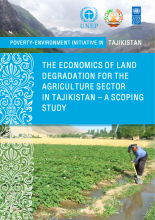/ library resources
Showing items 1 through 9 of 364.Climate warming and human actions both have negative impacts on the land cover of Mongolia, and are accelerating land degradation.
Mongolia’s forests are located in the transitional zone between the great Siberian taiga and the Mongolian plateau of grassland steppe.
Due to oil exploration and other human activities in the Niger Delta region, there is evidence of environmental degradation all over the area (Oronto, 1998).
Land is very important natural resource to the human being as it provides the basis for more than 95% of human food. On the broader context, land has many other functions, e.g.
As part of the broader United Nations Development Programme and United Nations Environment Programme (UNDP/UNEP) Poverty-Environment Initiative (PEI), Phase 1 Project, the overall objective of this study is to develop a framework to assess the impact of land degradation and the benefits of SLM.
Due to oil exploration and other human activities in the Niger Delta region, there is evidence of environmental degradation all over the area (Oronto, 1998).
As one of the few remaining countries with a robust, nomadic pastoral culture supported by extensive natural rangelands, Mongolia is well positioned to offer sustainable, rangeland-based goods and services to its citizens and to global consumers who place a premium on sustainable products.
Esta publicación presenta el informe final del Plan de Acción Nacional de Lucha Contra la Desertificación y los efectos de las Sequías de República Dominicana.
This report summarizes the key outcomes of the national efforts carried out in 2014 and 2015 towards putting in practice the land degradation neutrality concept.
Paginação
Land Library Search
Through our robust search engine, you can search for any item of the over 73,000 highly curated resources in the Land Library.
If you would like to find an overview of what is possible, feel free to peruse the Search Guide.







